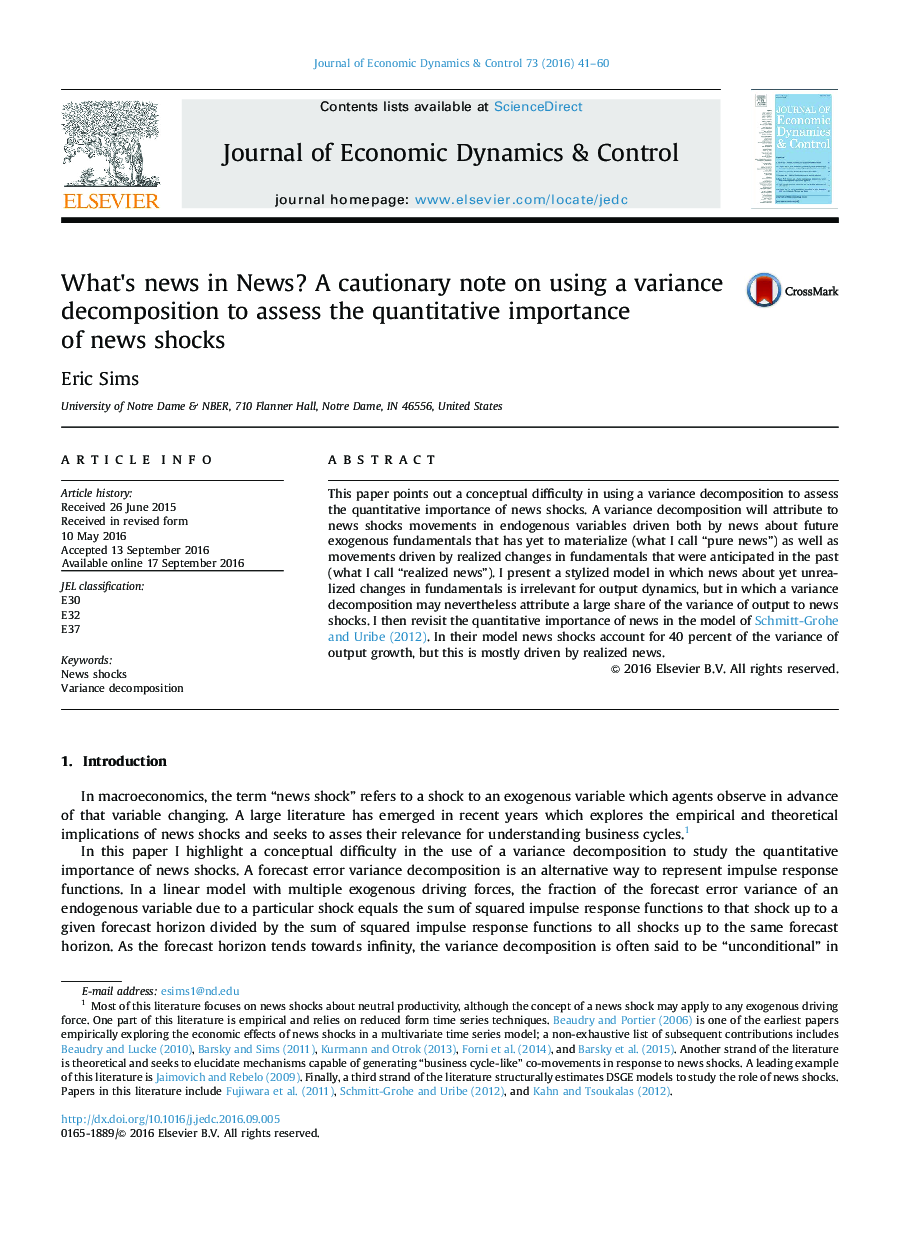| Article ID | Journal | Published Year | Pages | File Type |
|---|---|---|---|---|
| 5098093 | Journal of Economic Dynamics and Control | 2016 | 20 Pages |
Abstract
This paper points out a conceptual difficulty in using a variance decomposition to assess the quantitative importance of news shocks. A variance decomposition will attribute to news shocks movements in endogenous variables driven both by news about future exogenous fundamentals that has yet to materialize (what I call “pure news”) as well as movements driven by realized changes in fundamentals that were anticipated in the past (what I call “realized news”). I present a stylized model in which news about yet unrealized changes in fundamentals is irrelevant for output dynamics, but in which a variance decomposition may nevertheless attribute a large share of the variance of output to news shocks. I then revisit the quantitative importance of news in the model of Schmitt-Grohe and Uribe (2012). In their model news shocks account for 40 percent of the variance of output growth, but this is mostly driven by realized news.
Related Topics
Physical Sciences and Engineering
Mathematics
Control and Optimization
Authors
Eric Sims,
